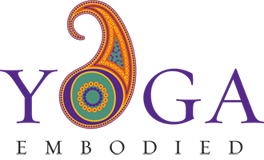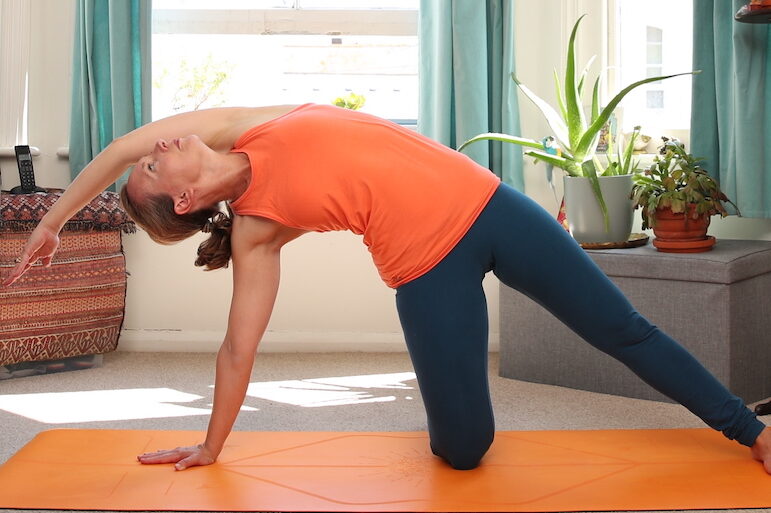Sometimes breathing becomes a challenge. Perhaps now more than ever we are aware of our precious breath.
With covid-19 and long-covid we see people struggling to breathe. Something that can be a challenge for a long time. Some of us are experiencing anxiety and find it difficult to take a full breath and using the breath to calm down. I am also talking to people with chronic obstructive pulmonary disease (COPD) where there has been damage to the lungs and so breathing becomes a challenge.
So I have been thinking a lot about breathing lately. Because our bodies breathe all on their own. It is a natural process. We don’t really need to think about it. Yet, we are rarely allowing our breath to breathe fully and with ease.
The natural breath and conscious breath
Our breath is most conscious and unconscious. We breathe while we are sleeping, we breathe faster when exercising, we slow it down when relaxed. That’s our body – all on its own.
We can consciously slow down the breath, breathe deeper, exhale for longer. We can also choose to do quick fast breaths as we practice in certainly breathing exercises such as kapalabhati and bhastrika.
Because our bodies breathe all on their own. It is a natural process. We don’t really need to think about it. Yet, we are rarely allowing our breath to breathe fully and with ease.

The posture affects the breath
I know I go on about this in the yoga classes but, once again, everything is connected. How you stand, sit and where you hold tension affects your breathing. These are some of the things we (most of us) have control of.
Try slouching, tuck the tailbone under to sit on the sacrum, collapse the chest, stick your chin forward… How well do you breathe?
Most likely not very well. Your body is not in an optimal positioning to breathe.
Slouching, collapsing the chest which can eventually lead to kyphosis tightens the area around the lungs specifically the respiratory diaphragm. That is the big muscle sitting under the lungs and ribs. That muscle needs to be able to move up and down to facilitate our breathing. Our exhale and inhale. It’s such an important muscle.
You may have experienced an achy respiratory diaphragm if you coughed a lot or if you have been vomiting a lot. But it may just be tight because of your posture too.
Most of us have some tightness and tension in our necks and shoulders. Not only are they tight from slouching and collapsing the chest but also because of our posture when we are on the computer writing for example. It is also the place where many of us hold our mental and emotional tension and stress.
Someone who feels afraid or scared will usually immediate lift their shoulders to their ears.
To breathe we need to have mobility in our shoulders and the top of the chest. Need it’s to move for the lungs to expand as inhale and be able to come back again on the exhale.
If we have tightness in our shoulders and chest we don’t have the optimal mobility for our bodies to breathe fully.
The ribcage and our breathe
Did you know that there are muscles between the ribs? The intercostal muscles might not be the biggest muscles but they can stretch and contract. And they should because that’s what we do when we breathe.
We can stretch and extend through exercise and yoga. But we can also exercise these muscles through conscious breathing.
Breathing all the way to the pelvis and pelvic floor
Yes, indeed. Our respiratory diaphragm and pelvic diaphragm (also known as the pelvic floor) are connected. So if you carry tightness in the pelvis it will affect our breathing. In fact, the pelvic floor and tight shoulders and neck are often related and connected.
If we slouch we tighten the pelvic floor. Structurally the bones of the pubic, coccyx and sitting bones move closer. So, not in that strong powerful pelvic floor way that is often celebrated. No, we tighten it in the same way we tense the shoulder and neck and seriously need a massage way.
Let’s breathe
So whether you are stressed, anxious or excited and forget to breathe. Or you know you sit down too much, don’t have the ideal posture and mobility or can admit you slouch a bit too often. Or maybe you do have some structural or medical reason for not being able to breathe fully…
We can all create the best possible environment for our breath to breathe. We can all encourage movement and mobility to facilitate space to truly expand, in all directions, on the inhale. To feel the full exhale connecting to our diaphragm.
So perhaps you decide:
- To sit up in a position that allows easy breathing. Understanding your posture whether you are sitting watching tv, in the car or train, working on the computer… how do you choose to sit?
- Maybe you make time to stretch your shoulders and sides of the ribcage.
- Take a few full diaphragmatic breaths feeling how much the ribcage can expand.
- Play around with various breathing practices or pranayama.
- Find ways to stretch and calm the body to calm the breath.
- Explore techniques to calm the mind to calm your breathing.
- Noticing how the body including the abdomen and pelvic floor respond to your breathing.
On Monday the 4th of September 6pm we will focus on our breath. We will explore the connection on just how our body, breath and mind are connected. Calming and stretching the body to calm the breath and mind. Breathing fully to find flexibility in the body and the mind. And allowing the mind to find ease to relax body and breath.
It’s a live zoom class in the Monthly Membership and part of our chill-out yoga sessions. The class will be recorded and can be accessed in the membership for all members anytime, anywhere.
Calming and stretching the body to calm the breath and mind. Breathing fully to find flexibility in the body and the mind. And allowing the mind to find ease to relax body and breath.


